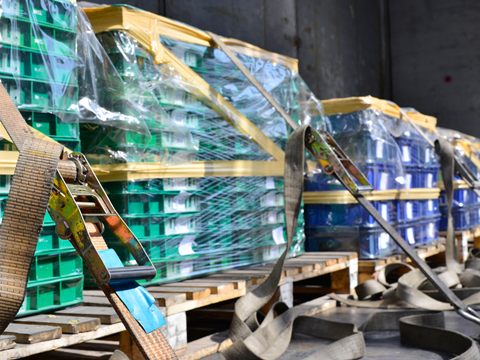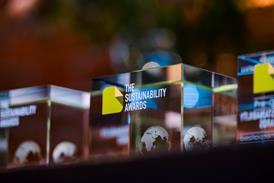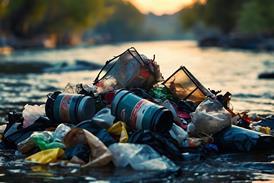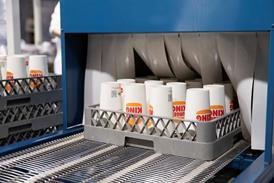
Various MEPs have urged the European Commission to revisit the Packaging and Packaging Waste Regulation (PPWR)’s reuse quotas for industrial packaging, arguing that failing to consider contamination in transit or the availability of alternative materials will impact European supply chains.
The MEPs take issue with Article 29, in which the first to third paragraphs introduce ‘significantly extended’ reuse quotes for industrial and commercial transport sales packaging formats. These are said to lack any justification via scientific analysis or an impact assessment.
According to the MEPs, there are ‘no practical reuse solutions’ for some of the packaging formats targeted; it raises pallet wrappings and straps as an example, with their reuse quotas feared to ‘jeopardize important supply chains throughout Europe’.
European Plastics Converters (EuPC), IK Industrievereinigung Kunststoffverpackungen (IK), and Elipso made a similar argument in their own document; they emphasized that pallet wrappings and straps cannot yet be made from an alternative material that will perform the same function effectively, and that many existing formats are fully recyclable and contain post-consumer recyclate.
The MEPs continue that extending reuse quotas to sales packaging used for transporting products is ‘highly problematic’. Unlike transport packaging, sales packaging of this kind gets contaminated due to direct contact with products, which can prevent full reuse in ‘many’ contexts – for example, when applied to dairy products, chemicals, or paint.
The statement suggests that the ‘well-established distinction’ between transport and sales packaging – the latter of which is used for the transportation, protection, storage, and use of products, as well as for information and safety – has been ‘water[ed] down’ in the current regulatory text, with the original proposal said to have ‘deliberately limited the scope of the reuse quotas to transport packaging’.
Additionally, the MEPs argue that the 100% reuse quotas introduced for transport between companies in a Member State and intra-company transport in the EU ‘contradict the basic principles of the EU internal market’ – an outcome that would apparently put SMEs, in particular, at a ‘clear disadvantage’ compared to larger companies.
While Maroš Šefčovič, previously the vice president of the European Commission for the European Green Deal, has stated his intent to submit a delegated act to exempt pallet wrappings and straps from these expectations, the MEPs describe this as ‘important’ but ‘by no means enough’.
“The Commission also needs to tackle the uncertainty created by the term of sales packaging for the transport of products and limit the scope of reuse quotas to transport packaging as originally intended,” the statement says.
“The current text of Article 29, paragraphs 1-3 of the PPWR creates complexity and threatens supply chains all over Europe at a time when enhancing competitiveness is crucial and the stated goal of the Commission as laid out in the Competitiveness Compass and the Clean Industrial Deal.
“It is therefore essential that the Commission immediately carries out an impact assessment for all packaging formats mentioned in Article 29, paragraph 1, and then uses delegated acts to exclude those packaging formats from the scope of paragraphs 1-3 for which reuse quotas do not make ecological and economic sense.”
In response to our readers’ broader concerns with the PPWR, we spoke to Marius Tent – a leading PPWR expert and the founder of ViaPackaging UG and 360PackMastery – about the implications of the new exemptions, reuse versus recycling quotas, and much more.
Similar discussions took place between ProFood and Freshfel Europe at this year’s Fruit Logistica, with concerns raised about the ban on plastic packaging for fruits and vegetables under 1.5 kg, the apparent need for a more balanced approach, and the risks of fragmenting the European market if exemption lists are improperly handled.
However, the Rethink Plastic Alliance believes more ambitious reuse targets are the way forward. It pushes for stricter and additional reuse thresholds, the wider enforcement of deposit return schemes, and financial incentives for choosing reuse over single-use, among other suggested developments.
If you liked this story, you might also enjoy:
Reuse vs. single use – which is better for the environment?
Sustainable Innovation Report 2025: Current trends and future priorities
What can the world learn from South Korea’s world-leading performance in plastics circularity?


















No comments yet